秒词邦
分题型分考点背单词 文
文 文
文
电影作为七大艺术里最年轻的艺术形式,却是最被大众所接受的。你很少能见到一个从不看电影的人,但是电影应该如何鉴赏,却是一门学问。
导演贾樟柯在新书《电影,我略知一二》中,分享了他的“电影学习经验”,面向大众讲述了他对电影的一些看法。比如下文中,他讲到,理论看起来是个虚无的东西,却是一个导演最深层的内核;纪录片看起来看起来只能基于现实而拍摄,却是一种相当自由的形式。
下文摘选自《电影,我略知一二》经出版社授权推送。小标题为编者所拟,篇幅所限内容有所删减。
01
理论是最深层的滋养
对于很多人来说,电影好不好看是很直观的感受。但是在这个世界上,人们的生活经验和感受力不尽相同,如果能掌握一些基本的电影规律,对接受不同风格的电影,特别是各自经验范围内不熟悉的那些电影会有一些帮助。
一直到现在,我都觉得我个人的创作一直得益于理论的滋养。在上世纪九十年代我们读书的时候,像我所在的北京电影学院93级,是所有的专业都招,有很多关于创作的专业,如导演、摄影、美术,教学偏重于创作实践。
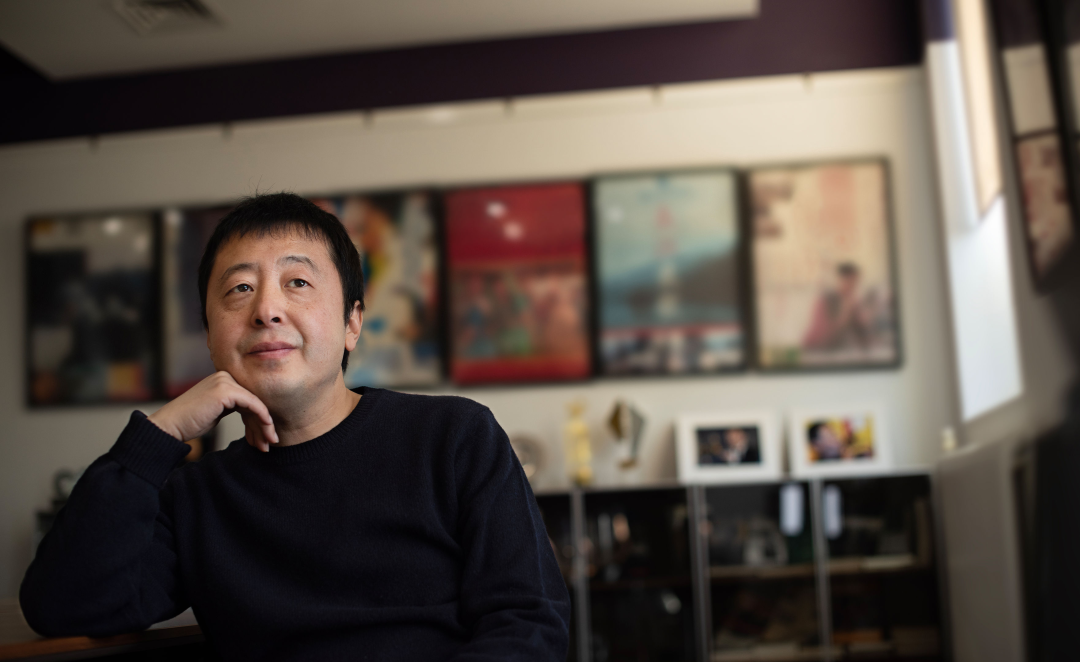
贾樟柯
而我是学电影理论的。当时,在同学中间就流行一种观点,认为学理论没有用,对于创作来说理论太遥远、太枯燥了。其实那个时候我也分辨不清,对我来说,因为刚接触到电影,而我的专业是电影理论,我必须去好好学习自己应该学的,其次才是去学其他专业的一些课程。
北京电影学院的课程设置很科学,我们在大一、大二有很多不同年级各系都要上的公共课,包括电影摄影,我们也学了两年。教过我们的老师,有穆德远老师、赵非老师。电影录音我们也有专业课,表演也有。
对于我们理论班的同学来说,这些课程会更偏理论一些,但是比如说摄影课,我们也是从拍黑白照片到照片的冲印都要学。那时候还有暗房技术,还要学暗房,从拍照片,到自己去冲洗、接触到胶片,慢慢地去掌握胶片的基本原理。
电影是具有实践性的,有技术门槛,理论究竟能起到什么作用?那时候我确实不是太清楚。它不像学习专业技术那么显而易见、立竿见影。
比如上导演课,什么是轴线?什么是跳轴?这堂课上完了确实能学到具体的东西,在创作的时候也会经常面临这个问题。摄影也是,学习胶片原理,掌握不同镜头的特性,有了这些知识之后,在实践中马上可以使用,可以印证。
但是理论是一个虚无的东西,在实践中往往感觉碰不上,所以大家就觉得理论好像可有可无。然而随着电影工作的深入,我后来觉得,如果电影技术是保证电影物质呈现的基础,可以比作创作者的“硬件”的话,那么理论就是创作者的“软件”。
电影理论首先带来两个层面的问题,第一个就是对电影这种艺术媒介的理解和认识,简单来说就是:什么是电影?第二个就是怎么理解这个世界,怎么理解人?我觉得后一个可能更重要。
02
“想让一个人的命运发生改变,有什么方法?”
关于第一点,媒介认识方面的理论,我想举一个关于电影叙事的例子。我们读书的时候,电影的剧作理论,一开始是非常偏向于俄罗斯式的,也就是苏联的剧本创作方法。因为那时候我们剧作课的主任教员是王迪老师,他是留苏回来的,所以他非常讲究剧本的文学性:剧本要可以发表,剧本要可读,它不仅要可以支持拍摄工作,而且要可以供人阅读,它得是一个文学作品。
后来到了大二、大三的时候,我们就开始设立美国剧本方法的课程了。我记得有两个胖胖的美国老师来给我们做短期的剧本训练,他们的教育方法和思路就完全不一样。他们不要求剧本成为一个文学读物,而是要求它更像一份“施工蓝图”。第一堂课的时候,美国老师就问了学生一个问题:“如果想让一个人的命运发生改变,你们觉得有什么方法?”当然他是指在剧本中,我们一时也不知道怎么回答。
因为那时候流行一句话叫“知识改变命运”,我就开玩笑回答说:知识。这其实有些搞笑的成分,同学们都在笑我。老师对我说:“你讲得太笼统了,剧本需要具体的动作支持。比如让你的人物离开家去外地上学,就可能改变命运;比如说让人物搬家,他会改变;比如生病,他会改变。”他举了很多例子,完全是另外一种剧本的创作思路。
苏联和美国的创作体系都是高度理论化的,当你对比这两种体系的时候,当你掌握了这两种不同理论的时候,其实并不一定是要选择哪一种、放弃另一种,而是说这两种方法,它们会融为一种属于你自己的方法。
我记得在苏联式的剧本创作理论中,从来没有谈过叙事的跟踪性,因为解冻时期以来的苏联剧本很讲究抒情和诗意,基本上不强调叙事的效率。但是美国的剧本创作理论首先就是跟踪性。何为跟踪性呢?就是观众从看电影的第一分钟起,被什么动力牵引能够一直看完90分钟,是什么在吸引他?是充满悬念、不断递进的情节,还是氛围?这种跟踪性是由什么造成的?
我大量的剧本写作,基础的创作方式都是苏联式的,因为我觉得剧本的遣词造句非常重要,它是一个工作基础,并不单单是为了发表或者被读者阅读,而是说你要用相对生动、准确的词语,让你所有的工作伙伴,包括演员、摄影师在内,理解你想要创造出来的电影氛围。
但是,我又觉得我深受美国电影理论中叙事跟踪性的影响。这种叙事的跟踪性,确实是需要你内在有一套办法,无论是将它建立起来,还是打破它,都会让叙事变得具有自我生长性,至少会有递进感。
我的第二部电影《站台》的初稿,我一开始特别不满意,我也不知道为什么不满意。我觉得很多细节方面的回忆与想象写得很准确,但整体上总是缺点力道,我不知道问题出在哪里。后来我突然想起美国剧作理论中的“跟踪性”问题,我发现当时的剧本确实是缺乏跟踪性的。
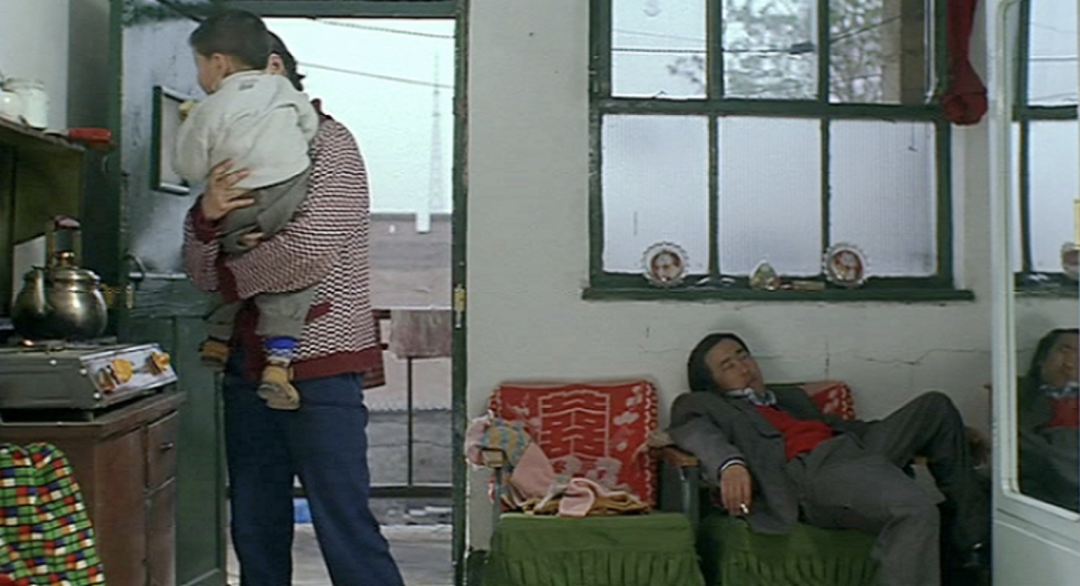
电影《站台》
初稿《站台》到了叙事的中段就有点像俄罗斯套娃,看着很丰富,但揭开一个其实跟第一个一模一样,再揭开一个跟第二个一模一样,再揭开一个跟第三个一模一样,都是同样一种面貌,只是体积由大变小而已。
之后,我看到的很多电影其实在叙事上都有一个很大的通病:推动性不够,递进性不够,一直在重复,就像俄罗斯套娃一样。
这种剧作上的递进性不足,我把它称为“俄罗斯套娃”问题。这个时候,在你需要下判断的时候,理论就变得很重要,所谓理论,就是前人对创作经验的总结。理论不是信条,不是说理论要求有叙事跟踪性,你的电影就必须要有叙事跟踪性,你可以反叛它,但是你要懂这个东西,你要理解创作的常态是什么、常规是什么。
当你成为一个叙事的叛逆者,要反叛它的时候,你应该有很清晰的认知,知道你在反叛什么。这不是乱来的,不是乱反叛的。这就是理论认识在创作方面的小小的指导,它给创作者提供做判断时的参照。
我觉得无论是作为编剧,还是作为导演,特别是作为一个导演,很多时候是在做判断性的工作,就是做决定。小到同样五个道具摆在那里,你究竟挑哪一个;大到挑演员,再到叙事方式的选择、情节的取舍、人物的设置,所有这些东西无时无刻不需要做判断。而在做判断的时候,我觉得一部分是靠直觉,但更多的时候,往往需要理论的支撑。
之后我有机会接触到很多同行,我发现能够长时间保持比较高的创作水平、保持旺盛创作力的导演,他们往往都有自己的一套电影理论。像已经过世的导演阿巴斯,可以说是一个电影理论家;像奥利维耶·阿萨亚斯,他不仅是一个电影理论家,还是一个电影史学家。
像马丁·斯科塞斯,在2002年的时候,我去他的工作室做客,那时候他正在剪辑《纽约黑帮》这部电影。他给我看了一些片段,然后说他为了剪这几场戏,这两天一直在看爱森斯坦的电影和他的理论书籍。我想马丁·斯科塞斯的电影语言跟蒙太奇式的爱森斯坦的语言,差距还是很大的。但是他能够在他要做决定的时候,回到电影史,回到启发过他的导演们,在这些导演的理论里面来寻找他现在的位置,寻找他此刻做决定的一些依据。
03
电影就是看待世界的角度
以上这些都是从具体的创作技巧层面来说的。再说第二点,从更大的层面来说,我们面对纷繁复杂的世界,电影就是解释我们是如何看待这个世界的,我们必须带着我们自己看待世界的眼光和方法来进行创作,这些眼光和方法来自于更大的哲学层面,来自于我们基础的人文素养。
这些人文素养的形成有可能是综合性的,比如说:你是不是接受过女权主义的一些理论?是不是在性别问题上有你自己的判断和理解?是不是接受过新历史主义的方法?在重新书写历史的时候,你重视什么?
从新历史主义开始,我们重视个人的个案、重视细节,这些都会反映在你怎么调动你的电影,去反映你想反映的世界。比如我们读书时开始流行后现代理论,会看一部电影中的思考是不是建立在某种后现代精神上。如果当整个社会看问题的方法已经处在一个解构的阶段时,如果你还在建构一个封闭的、上帝式的视角,你看待世界的方法可能就显得保守了。
现代理论的学习,让我们更加贴近于人类目前理解问题、处理问题的前沿。所以有的电影一出手,就是一部现代电影;有的电影一出手就是一部,也不能说保守,叫它前现代电影吧,它就是一部旧的电影,它出产年月可能是2020年1月,但说得绝对一点,它可能是一部很过时的电影。
为什么会过时?因为它看待世界的目光是旧的,是陈腐的。怎么保持一种新鲜的目光,这取决于我们对人类思考这个世界最新进展的一些理论的掌握情况,这些理论要变成我们的“软件”。

暗房技术中使用的放大机,暗房技术可以直接控制影像制作全过程的每一个步骤
通过学习这些理论,我们变成一个现代人,我们具有了现代精神,我们的电影才能有现代精神。如果你停留在三十年前、四十年前的那种对世界的认知,比如说“非黑即白”,这就是过去的认知模式,你今天理解这个世界还是用“非黑即白”的模式的话,显然相对来说你的精神可供当代人分享的部分就会显得落伍。所以我觉得从根本上来说,理论某种程度上就是一种自我建设。
当你不停地吸取理论,成为一个具有当代精神的人的时候,你基本上才能够保证你的电影是当代的。你可以拍古代,可以拍未来,你也可以拍此时此刻,但是想让电影贯穿当代精神,需要你这个人是一个当代人,否则就算你拿到一个非常有当代精神的小说原著,也可能把它改编得缺乏新意。
比如说《赵氏孤儿》,我从九十年代开始就看过非常多《赵氏孤儿》的故事和改编的剧本,各种各样的版本。同样一个故事,但不同版本的改编有不同的侧重点。我记得其中有一本小说,我特别喜欢。因为它提出了一个思考,就是:仇恨是不是应该被继承?我觉得很新颖,一个古老的中国戏曲故事,在一个翻写的小说里面,提出了一个新问题,就是:要不要继承这些仇恨?要不要继承这笔血债?它跟个体有多大的关系?我觉得相对来说这就是一个新的思考。
一个同样的古代的故事,它可以有这样一种新的角度。有的改编跟几百年前的元杂剧没什么区别,还是忠臣良将,那我们为什么在今天还要重复地讲述它?这表明写作者本人的系统还是一个陈旧的系统。
这也就回到了这一讲的主题——电影的新与旧。所以,我觉得理论会帮助我们成为具有现代精神的电影工作者,或者说具有现代精神的观众,我们需要通过继承前人理解世界的方法,形成一种当下的观点。
04
纪录片就不是电影吗?
如果用文学来类比电影,大多类型片或许可以类比为小说,某一些电影可以类比为散文或者诗歌,纪录片则可以类比为非虚构文学。作为世界上最早诞生的电影形式,纪录片始终在电影艺术中占有非常重要的位置。
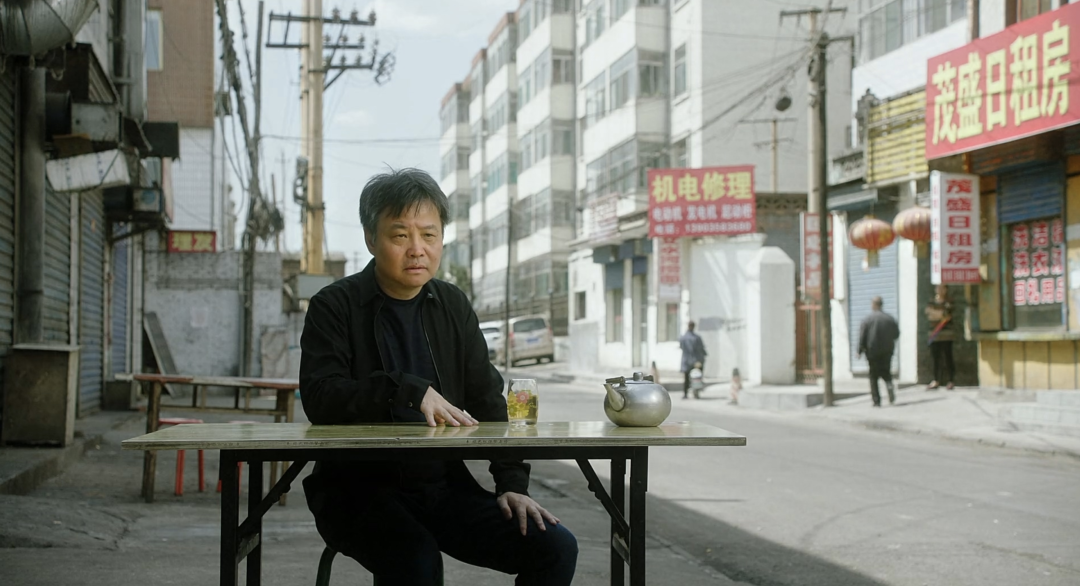
纪录片《一直游到海水变蓝》
最近常常有人说,贾导,你又拍了一部纪录片,拍了《一直游到海水变蓝》,那什么时候再给我们拍一部电影啊?这让我很疑惑,为什么要把纪录片和电影对立起来,纪录片不就是电影的一种吗?我明白,这些朋友所说的电影,就是虚构性的作品,也就是通常说的故事片,但是非虚构性的纪录片当然也是电影,而且是最早的电影形式。
电影最初发明出来,导演们就开辟了两个传统。卢米埃尔兄弟的《火车进站》《工厂大门》是电影纪录传统的开端,这是第一个传统。
1895年拍摄的《工厂大门》,摄影机对着卢米埃尔工厂的大门,人们看到女工们穿着衣裙,戴着软边的帽子,帽子上还插着羽毛,三五成群,边说边笑地步入厂区。
在《火车进站》中,我们可以看到火车站的月台,男女老幼正在等候火车的到来,列车从远处驶向站台。卢米埃尔兄弟是室外实景拍摄的先驱,《火车进站》是最为典型的一部作品:摄影机架在站台上,朝向远处延伸的火车轨道。站台上空无一人,景深处一列火车迎面驶来,火车头驶出画框左沿站台停下,旅客们上下火车。其中有一位少女在摄影机前面迟疑地经过,并露出自然的、羞涩的表情。火车离开站台驶出画框。
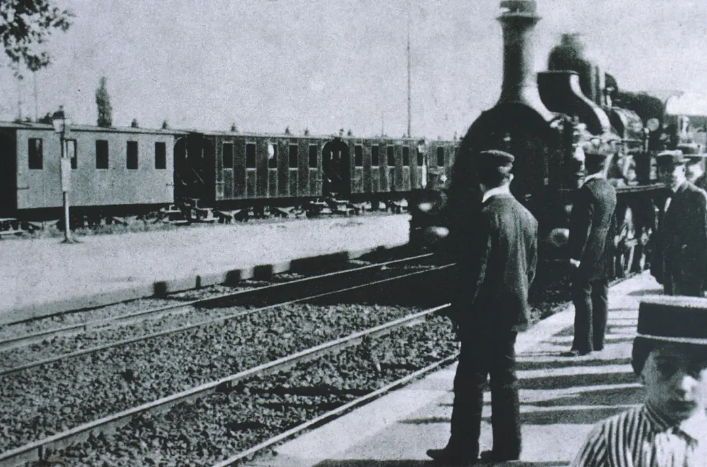
电影《火车进站》
在这部影片中,物体与人物时远时近,不同景别的视觉变化,形成了纵深的场面调度,也就是今天我们所说的“长镜头”。
乔治·梅里爱的电影则脱胎于魔法剧院。梅里爱是魔术爱好者,他当时买下了魔术师罗培·乌坦在巴黎创建的剧院,他也成了魔术“导演”,他的魔术剧不但有他发明的独特的魔术道具,还有剧本。
1895年12月28号,当卢米埃尔兄弟第一次向世人展示他们拍摄的电影时,邀请了许多巴黎名流,其中就包括当时还是魔术师的梅里爱。梅里爱一下子就被电影这个新鲜的东西给迷住了,他认为电影是比魔术更高级的魔术。
梅里爱打算买下卢米埃尔的电影设备。到放映结束后,他找到了卢米埃尔的父亲安托万·卢米埃尔,提出购买这款摄影机和放映机,但最后他被卢米埃尔父子婉言拒绝了。然而这并不妨碍他继续做他的电影梦,他开始“弃魔从影”,走上了电影道路。
梅里爱受到当时照相馆的启发,把自己家的花园和厂房改建成世界上最早的摄影棚。在摄影棚的环境里,1902年,梅里爱根据凡尔纳的小说《从地球到月球》和威尔斯的小说《第一个到达月球上的人》,拍摄了一群天文学家乘坐炮弹到月球探险的情景,即著名的影片《月球旅行记》,这部电影也被认为是科幻电影的先驱。
梅里爱的电影开拓了电影的另外一个传统,即虚构叙事的传统。他发明了各种电影特技,用电影拍摄已经在舞台上加工过的、虚构的生活图景。
05
在已知中找到未知的
在欧美的很多电影学院里,纪录片是每个学生的基础课,就如纪录片是电影最早的形式一样。事实上,纪录片考验一个创作者高度的创作自觉性和敏锐性。
因为当你决定拍一部纪录片的时候,你要拍摄的东西带有一种未知的、偶发的情况,导演要对这种情况做出第一反应。这个反应既是内容的反应,也是形式的反应。也就是说,导演在同一个时间要做出两个决定,一个是决定“拍什么”,另一个是决定“怎么拍”。“拍什么”是内容的问题,“怎么拍”是方法的问题,是电影语言的问题。
因为导演所面对的拍摄对象具有不确定性和偶发性,所以在纪录片拍摄现场,导演要在第一时间意识到发生了什么,并且同时判断采用哪一种方法捕捉和表现正在发生的情况是合适的。
通常来讲,我们在构思一部纪录片的时候,拍摄前会有一个笼统的主题,在这个主题之下,导演要对事件、人物的走向有自己的预测和判断。
一开始,导演可能想拍一个公共机构,比如美国导演怀斯曼拍《医院》,或者拍《书缘:纽约公共图书馆》。医院、纽约公共图书馆作为一个空间的存在,我们可以预计到在其中会发生很多事情,但具体会发生什么,没有人知道。
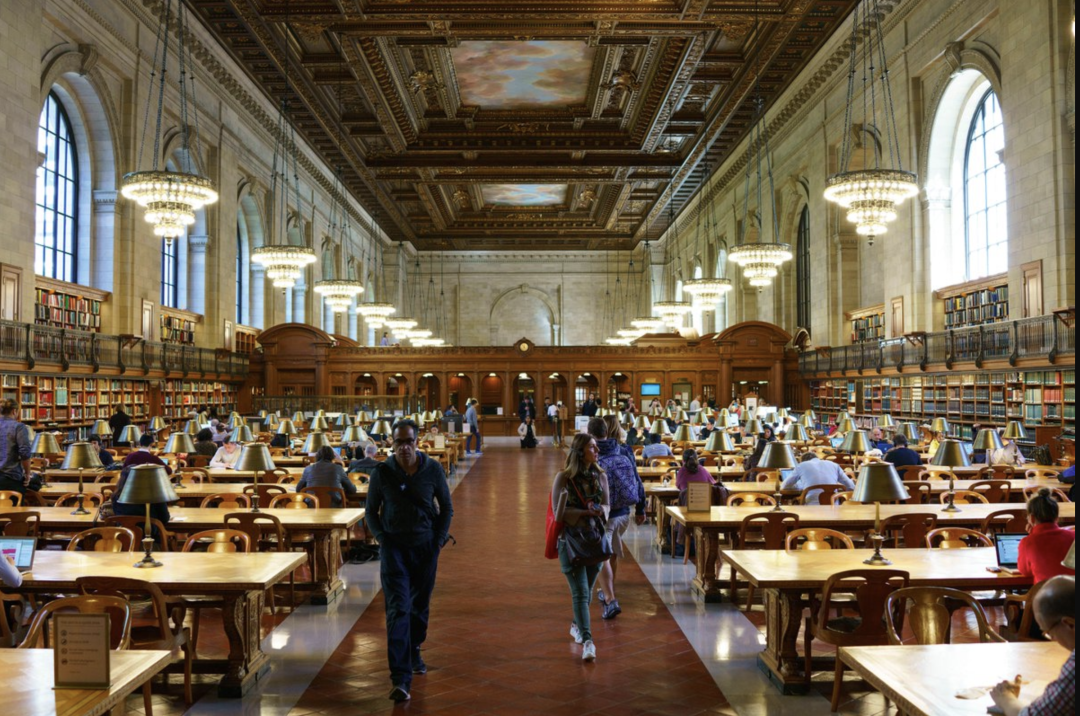
纪录片《书缘:纽约公共图书馆》
我们可能想要拍一个派出所,如果我们有两三个月的拍摄周期,我们当然会在这个派出所中遇到各种各样的突发事件,但这些突发事件是什么呢,这些事件中的人是谁,没有人能够知道。
有时候,我们也可以去拍一个大的空间,大到一座城市,甚至一个国家,比如王兵的《铁西区》就是拍沈阳的一个传统工业区。而1972年安东尼奥尼导演拍摄的《中国》,这是一部鸿篇巨制。他带着摄影机,如果我没有记错的话,是去了北京、上海、南京、河南等地,遭遇这个国度的陌生人,捕捉“文化大革命”期间的中国——这样一个对西方人来说还很神秘的国度。
纪录片也可以被预设为某种事件。比如说,荷兰导演伊文思1938年在中国拍摄的《四万万人民》,就是二战期间,中国正处于抗战阶段,伊文思导演带着摄影机,来拍摄这样一个国际性的事件。
同样一个导演,也可以只是在拍一种天气,比如说他的短片代表作《雨》,并没有固定的人物与戏剧情节,仅仅是在拍摄一个城市下雨前、雨中和雨后的情景,形成一种诗意的、抽象的记录。
上世纪六十年代,日本东京郊区的三里塚一带爆发了当地农民反抗为修建成田机场强占耕地的活动,小川绅介就带着他的摄制组住进三里塚,开始了持续十一年的纪录片《三里塚》系列的拍摄工作。1967年,他又拍出了以反抗东京羽田机场建设为主题的纪录片《现状报告书:羽田斗争记录》。
我们也可以拍一个人,这个具体的人可能是一个下岗女工、一个医生,也可能是一个律师,他们的职业本身可能会吸引导演,但除去这样一个职业,他们的生活信息是什么,这些都是未知的。
因此,首先纪录片拥有广阔的内容空间。更重要的是,在拍摄的过程中,导演如何敏感地捕捉到摄影机前的一切,也就是说,你有没有一双善于观察的眼睛和敏锐的捕捉力,能够将眼前的事件和情节捕捉下来。
同时,也涉及怎么拍的问题,你是固定机位去默默观察,还是随着人物走动?在这刹那的反应中,你还要考虑现场的光线与拍摄人物之间的距离、角度,要考虑影像色彩的构成,等等。
06
纪录片是一种相当自由的形式
拍摄纪录片实际上面临两个角色,一个是人,一个是空间。人总是在空间里活动的,你首先要处理人,拍摄他身上发生的故事,另外还要拍他所处的空间,所以我们面对的就是这两个被拍摄的主体。
先观察这个人的特点,然后感受他的气质。空间其实也是一样的,空间本身有它的性格,空间本身需要你去感受它,去跟它对话。所以,安东尼奥尼导演说,每到一个空间,他先要沉默三分钟,他要跟这个空间对话,他把任何一个他要拍摄的空间想象成是有生命、有气息的,他要接受这种气息。
因此,对于电影艺术来说,纪录片的重要性在于,它一直在开拓着我们对于未知世界的了解,也推动着我们对电影可能性的一种挖掘。
在纪录片拍摄的过程中,导演也在完成结构的工作,还需要跟拍什么样的周边人物?还需要跟随人物进入到怎样一个空间?在拍摄过程中,导演的总体把握里就包括了结构性的工作,就像作曲家写音乐,如何形成复调关系,不同乐器如何产生和弦关系。
纪录片的织体与和弦,是在拍摄过程中从现实中采样来的。你去拍什么、能捕捉到什么,建构着整部影片的开阔性,决定着视野是否开阔、角度是否多元。
影片完成之后,导演面对浩瀚的素材,再次进行对具体情节、镜头的取舍,最终建立纪录片的结构。我觉得做纪录片的灵活性就在于你可以在拍的过程中去丰富它,去让它生长。
纪录片可以说是最自由的。纪录片当然以真实性作为它最基本的伦理和价值观,但纪录片终究是一个艺术作品,在拍摄的时候,导演可以主动地去干预,或者预设行为,从而形成一种真实的记录,这不应该是被纪录片禁止的行为,而是一种非常重要的表现手段。所以这些方法不存在能不能用的问题,只存在用得好不好的问题。
比如说法国导演让·鲁什1961年的《夏日纪事》,他带着摄影机走在法国街头,向人们提出相同的问题:你快乐吗?这个问题是导演预先设立好的,但将人们对这些问题的反应与回答拍摄下来,却是一种真实的记录。
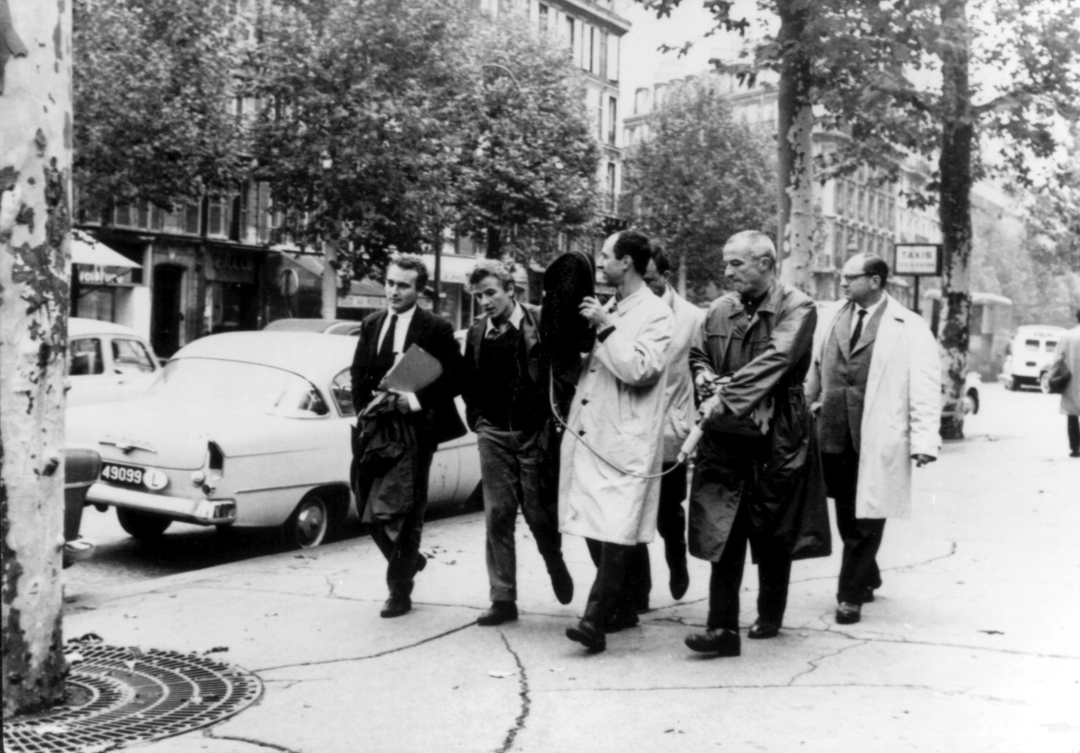
纪录片《夏日纪事》
在中国,曾经有过一档节目,记者去问不同阶层的人同一个问题:你幸福吗?后来就诞生了一个大家都知道的笑话,有一位农民对记者说:记者同志,我不姓福,我姓曾。
提出来的这个问题,它是有预设性、假定性的,可以说是某种虚构,但是不同的人面对这个问题,产生的却是真实的反应。这种方法被称为真实电影的方法,它包含了一种导演主观设定的情境,而这个主观设定的情境所产生的记录,却是真实的。比如雎安奇2001年的电影《北京的风很大》,也是将同样的问题提给不同的人,来捕捉他们第一时间、下意识的真实反应。
我记得有一部德国电影,讲东欧剧变之后,原来东德的一家国营工厂倒闭了。电影主要拍摄了几位在这个国营工厂工作过的女工的故事,电影中出现的场景主要是她们现在生活的场景。但在电影的结尾,导演把她们带到了曾经工作过的工厂,这个工厂现在已经变成了一个停车场。
三个女工被导演带入到这个真实环境之后,非常惆怅。最后她们慢慢把这个停车场的灯,也就是她们曾经工作过的车间的灯,一盏一盏熄灭,画面隐黑。这个结尾,是导演主观地把人物带到了一个可能产生情绪波动的场景,但是女工们进入到这种情境之后,她们的反应是感人并且真实的。
所以说,纪录片实际上是相当自由的一种形式。最终,纪录片仍然应该在美学的层面考虑问题,导演们追求的不单单是内在的真实,更应该考虑的是美学层面的真实感。

本文摘编自
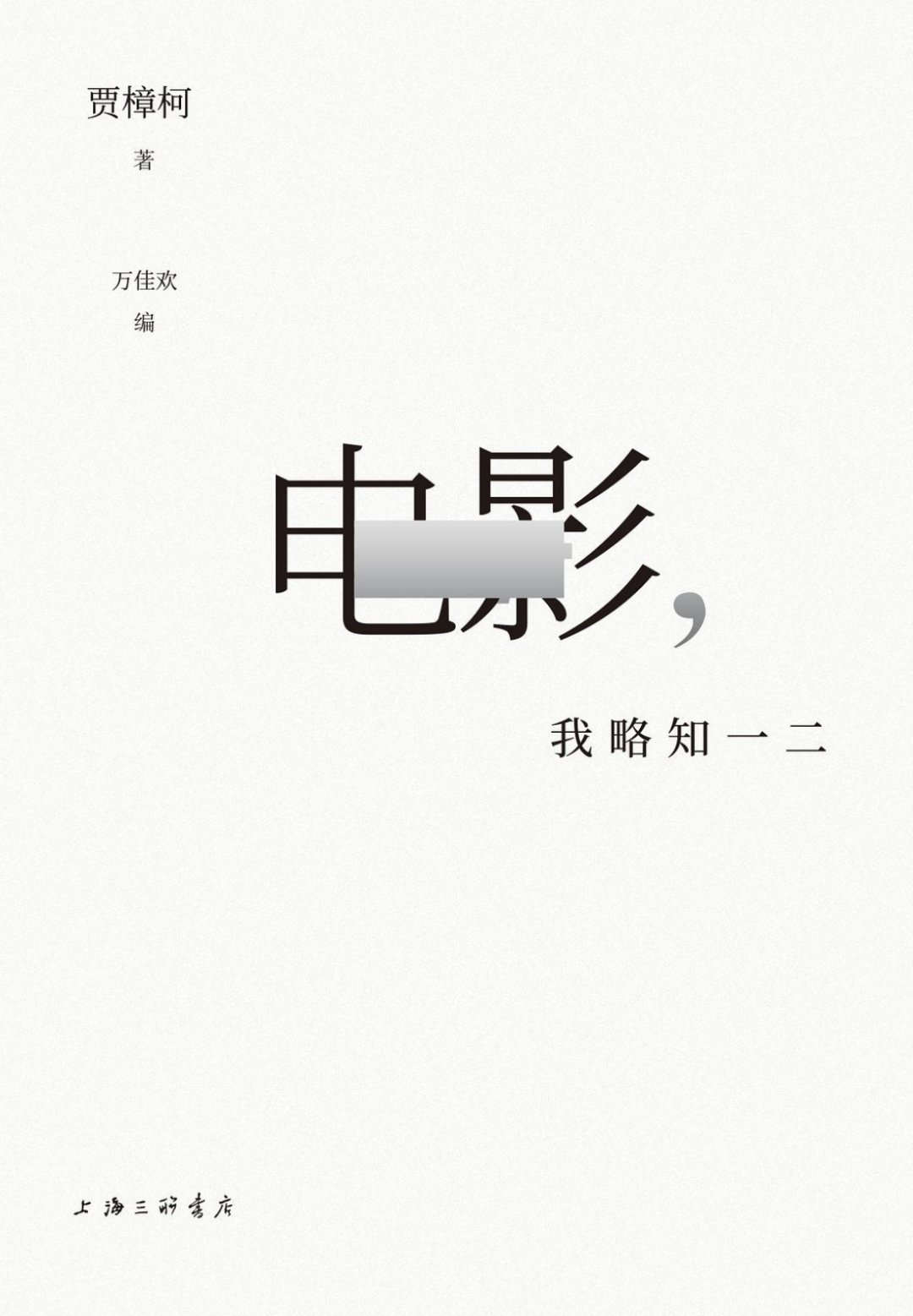
《电影,我略知一二》
作者:贾樟柯
出版社: 上海三联书店
出品方:理想国
出版年: 2024-5
Jia Zhangke | Movies explain how we view the world
As the youngest form of art among the seven major arts, movies are the most widely accepted by the public. You rarely see a person who never watches movies, but how to appreciate movies is a discipline.
Director Jia Zhangke shared his "film learning experience" in his new book "Movies, I Have Some Knowledge" and shared his views on movies with the public. For example, in the following text, he mentioned that theory may seem like a void, but it is the deepest core of a director; Documentaries may seem like they can only be shot based on reality, but they are a fairly free form.
The following excerpt is selected from "Movies, I Have Some Knowledge" and is authorized by the publishing house for promotion. The subtitle was drafted by the editor, and the content has been reduced due to space limitations.
01
Theory is the deepest nourishment
For many people, whether a movie is good or not is a very intuitive feeling. However, in this world, people's life experiences and feelings are not the same. If we can master some basic film rules, it will be helpful to accept movies of different styles, especially those that are not familiar within our respective experience ranges.
Until now, I have always felt that my personal creations have benefited from the nourishment of theory. In the 1990s, when we were studying, majors like Beijing Film Academy's Grade 93 were open to all, with many majors related to creativity, such as directing, photography, and art. Teaching focused more on creative practice.
Jia Zhangke
Jia Zhangke
And I am studying film theory. At that time, there was a popular view among classmates that learning theory was useless, and for creation, theory was too distant and boring. In fact, at that time, I couldn't distinguish clearly. For me, because I had just been exposed to film and my major was film theory, I had to study what I should have learned, followed by studying some courses in other majors.
The curriculum of Beijing Film Academy is very scientific. In our freshman and sophomore years, we have many public courses that different grades and departments need to take, including film photography. We also studied it for two years. Our teachers who have taught us include Mu Deyuan and Zhao Fei. We also have professional courses in film recording and performances.
For our theoretical classmates, these courses may be more theoretical, but for example, in photography class, we also need to learn everything from taking black and white photos to developing photos. At that time, there was also darkroom technology, and one had to learn darkroom techniques. From taking photos, to developing and interacting with film on their own, one gradually mastered the basic principles of film.
Movies are practical and have technical barriers. What role can theory play? At that time, I was not very clear. It is not as obvious and immediate as learning professional skills.
For example, in a directing class, what is axis? What is Jump Axis? After this class, I can indeed learn specific things, and I often face this problem when creating. Photography is also about learning the principles of film and mastering the characteristics of different lenses. With this knowledge, it can be immediately used in practice and can be verified.
But theory is a nothingness that often feels out of touch in practice, so people feel like theory is dispensable. However, as film work deepened, I later realized that if film technology was the foundation for ensuring the material presentation of a film, which could be compared to the creator's "hardware," then theory would be the creator's "software.".
Film theory first brings two levels of questions. The first is the understanding and recognition of film as an artistic medium, which can be simply put: what is film? The second one is how to understand this world and how to understand people? I think the latter may be more important.
02
"What are the methods to change a person's destiny?"
Regarding the first point, the theory of media cognition, I would like to give an example of film narrative. When we were reading, the theatrical theory of movies was initially very biased towards Russian style, which was the Soviet script writing method. Because at that time, the head teacher of our drama class was Teacher Wang Di, who came back from Suzhou, so he was very particular about the literary quality of the script: the script should be publishable, readable, not only able to support filming work, but also able to be read by people. It must be a literary work.
Later, in our sophomore and junior years, we started setting up courses on American script methods. I remember two chubby American teachers came to give us short-term script training, and their educational methods and ideas were completely different. They do not demand that the script become a literary reading material, but rather that it be more like a "construction blueprint". In the first class, the American teacher asked the students a question: "What do you think is a way to change a person's fate?" Of course, he referred to it in the script, and we didn't know how to answer it for a while.
Because there was a popular saying at that time called "knowledge changes destiny", I jokingly replied, "knowledge.". This actually has some funny elements, and my classmates are all laughing at me. The teacher said to me, "You talked too broadly, and the script needs specific action support. For example, asking your character to leave home and go to school in another city may change their fate; for example, asking a character to move will change him; for example, if he gets sick, he will change him." He gave many examples, all of which were different creative ideas for the script.
The creative systems of the Soviet Union and the United States are highly theoretical. When you compare these two systems and master these two different theories, it is not necessarily necessary to choose one or give up the other, but rather to say that these two methods will merge into one that belongs to you.
I remember in the Soviet style script writing theory, there was never a mention of narrative traceability, because since the thawing period, Soviet scripts have been very lyrical and poetic, and have basically not emphasized the efficiency of narrative. But the script writing theory in the United States is primarily about traceability. What is traceability? What motivates the audience to watch a movie for 90 minutes from the first minute, and what attracts them? Is it a plot full of suspense and continuous progression, or is it an atmosphere? What causes this traceability?
I have a lot of script writing, and the basic creative methods are all Soviet style because I think the wording and sentence structure of the script are very important. It is a work foundation, not just for publication or reading by readers, but also for using relatively vivid and accurate words to make all your colleagues, including actors and photographers, understand the movie atmosphere you want to create.
However, I also feel that I am deeply influenced by the narrative tracking in American film theory. The traceability of this narrative indeed requires you to have an internal set of methods, whether it is to establish it or break it, it will make the narrative self growing, at least with a sense of progression.
I was particularly dissatisfied with the initial draft of my second movie "Platform" at first, and I don't know why. I think many memories and imaginations about details are written very accurately, but overall there are always shortcomings, and I don't know where the problem lies. Later on, I suddenly remembered the issue of "traceability" in American drama theory, and I realized that the script at that time indeed lacked traceability.
The movie "Platform"
The movie "Platform"
The first draft Platform is a bit like a Russian doll in the middle of the narrative. It looks very rich, but the first one is exactly the same as the first one, the second one is exactly the same, and the third one is exactly the same. It is just the same appearance, but the size has changed from big to small.
Afterwards, many of the movies I saw actually had a common narrative flaw: lack of motivation and progression, constantly repeating, just like Russian nesting dolls.
The lack of progression in this type of play is what I call the "Russian nesting problem". At this point, when you need to make judgments, theory becomes very important. The so-called theory is the summary of previous creative experiences. Theory is not a creed, it does not mean that theory requires narrative tracking. Your film must have narrative tracking. You can rebel against it, but you need to understand this thing. You need to understand what the norm of creation is and what the norm is.
When you become a narrative rebel and want to rebel against it, you should have a clear understanding of what you are rebelling against. This is not reckless, it is not rebellious. This is a small guide for theoretical understanding in creative aspects, providing creators with a reference for making judgments.
I think whether as a screenwriter or a director, especially as a director, many times I am doing critical work, which is making decisions. As small as five props placed there, which one do you choose; From selecting actors to choosing narrative methods, choosing plot choices, and setting characters, all of these things require judgment at all times. When making judgments, I feel that some rely on intuition, but more often than not, it requires theoretical support.
Afterwards, I had the opportunity to interact with many colleagues, and I found that directors who can maintain a relatively high level of creativity and strong creativity for a long time often have their own set of film theories. Like the deceased director Abbas, he can be said to be a film theorist; Like Olivier Asayas, he is not only a film theorist, but also a film historian.
Like Martin Scorsese, in 2002, I visited his studio while he was editing the movie "The New York Gangster". He showed me some clips and then said that he has been watching Eisenstein's movies and his theoretical books for the past two days in order to cut these scenes. I think there is still a big gap between Martin Scorsese's film language and the montage style of Eisenstein's language. But when he needs to make a decision, he can go back to film history, go back to the directors who inspired him, search for his current position within the theories of these directors, and find some basis for his decision at this moment.
03
Movies are the perspective of viewing the world
The above are all from the perspective of specific creative techniques. Speaking of the second point, from a larger perspective, when we face a complex world, movies explain how we view the world. We must create with our own perspective and methods of viewing the world, which come from a larger philosophical perspective and our basic humanistic literacy.
The formation of these humanistic qualities may be comprehensive, for example, have you ever accepted some theories of feminism? Do you have your own judgment and understanding on gender issues? Have you ever accepted the method of New Historicism? What do you value when rewriting history?
Starting from the new historicism, we value individual cases and details, which will be reflected in how you mobilize your movies to reflect the world you want to reflect. For example, when we start reading, postmodern theory becomes popular, and we may wonder if the thinking in a movie is based on a certain postmodern spirit. If the whole society's approach to problem-solving is already in a deconstructive stage, and you are still constructing a closed, godlike perspective, your approach to viewing the world may appear conservative.
The study of modern theory has brought us closer to the forefront of human understanding and problem-solving. So when some movies are released, they are a modern movie; Some movies are just one at a time, and it cannot be said to be conservative. Let's call it a pre modern movie. It's just an old movie, and its production date may be January 2020, but to put it absolutely, it may be a very outdated movie.
Why is it outdated? Because its perspective on the world is old and outdated. How to maintain a fresh perspective depends on our mastery of some of the theories that humans think about the latest developments in the world, and these theories need to become our "software".
The magnifying machine used in darkroom technology can directly control every step of the image production process
The magnifying machine used in darkroom technology can directly control every step of the image production process
By studying these theories, we become modern people, and with modern spirit, our movies can have modern spirit. If you stay at the kind of understanding of the world thirty or forty years ago, such as "black or white", this is the cognitive pattern of the past. If you still understand the world today using the "black or white" pattern, it is obvious that the part of your spirit that can be shared by contemporary people will appear outdated. So I think fundamentally, theory is to some extent a form of self construction.
When you constantly absorb theories and become a person with contemporary spirit, you can basically ensure that your movies are contemporary. You can film the past, the future, and the present moment, but to make the movie embody the spirit of the present, you need to be a contemporary person. Otherwise, even if you get a novel original with a very contemporary spirit, you may still adapt it to lack novelty.
For example, "The Orphan of Zhao", I have been reading a lot of stories and adapted scripts of "The Orphan of Zhao" since the 1990s, in various versions. The same story, but different versions of adaptations have different emphases. I remember one of the novels, I really like it. Because it raises a question: should hatred be inherited? I think it's very novel. An ancient Chinese opera story, in a translated novel, raises a new question: should we inherit this hatred? Should we inherit this blood debt? How much does it have to do with individuals? I think relatively speaking, this is a new way of thinking.
A similar ancient story can have such a new perspective. Some adaptations are no different from Yuan Dynasty dramas from hundreds of years ago, and they are still loyal ministers and generals. So why do we have to repeat them today? This indicates that the author's own system is still an outdated one.
This also returns to the theme of this lecture - the new and old of movies. So, I think theory will help us become filmmakers with a modern spirit, or audiences with a modern spirit. We need to inherit the methods of our predecessors in understanding the world and form a current perspective.
04
Isn't a documentary a movie?
If literature is used as an analogy to movies, most genre films may be likened to novels, some movies can be likened to prose or poetry, and documentaries can be likened to non fiction literature. As the earliest form of film in the world, documentary films have always held a very important position in film art.
Documentary "Swimming Until the Sea turns Blue"
Documentary "Swimming Until the Sea turns Blue"
Recently, people often say, Director Jia, you made another documentary called "Swimming Until the Sea turns Blue". When will you make another movie for us? This makes me wonder why documentaries and movies should be opposed. Isn't documentaries just a type of movie? I understand that the movies these friends are referring to are fictional works, commonly known as feature films, but non fictional documentaries are also films, and they are the earliest form of film.
When movies were first invented, directors opened up two traditions. The Lumiere brothers' "Train in Station" and "Factory Gate" marked the beginning of the film documentary tradition, which was the first tradition.
In the 1895 film "Factory Gate", the camera aimed at the door of the Lumiere factory. People saw the female workers wearing dresses, soft brimmed hats, with feathers inserted in their hats, in groups of three or five, walking into the factory area while talking and laughing.
In "Train Entering the Station", we can see the platform of the train station, where men, women, and children are waiting for the arrival of the train. The train is heading towards the platform from a distance. The Lumiere brothers were pioneers in outdoor reality photography, and "Train Entering the Station" is the most typical work: the camera frame is on the platform, extending towards the distant train tracks. There was no one above the platform, and in the depths of the scene, a train was approaching. The locomotive pulled out of the frame and stopped on the left side of the platform, allowing passengers to board and disembark from the train. One of the girls hesitated in front of the camera and showed a natural, shy expression. The train left the platform and pulled out of the frame.
The movie "Train Entering the Station"
The movie "Train Entering the Station"
In this film, the visual changes of objects and characters in different scenes create a depth based scene arrangement, which is what we call "long shots" today.
George Merry's films were inspired by the Magic Theater. Merleau is a magic enthusiast who bought the theater created by magician Robert Utan in Paris. He also became the "director" of magic, and his magic plays not only have his unique magical props invented, but also have scripts.
On December 28, 1895, when the Lumiere brothers first showcased their films to the world, they invited many Parisian celebrities, including Merleau, who was still a magician at the time. Meri Ai was immediately fascinated by the novelty of movies, believing that movies are more advanced magic than magic.
Meri Ai plans to buy Lumiere's film equipment. After the screening ended, he approached Lumiere's father Antoine Lumiere and offered to purchase this camera and projector, but in the end, he was politely refused by Lumiere's father and son. However, this did not prevent him from continuing his dream of making movies. He began to abandon his demons and pursue a career in film.
Meri Ai was inspired by the photography studio at that time and transformed her garden and factory into the world's earliest photography studio. In the studio environment, in 1902, Merleau filmed a group of astronomers exploring the moon with shells based on Verne's novel "From Earth to the Moon" and Wells' novel "The First Man to Arrive on the Moon", known as the famous film "Journey to the Moon", which is also considered a pioneer of science fiction films.
Merry Love's films have opened up another tradition of film, which is the tradition of fictional storytelling. He invented various movie stunts and used them to shoot fictional life scenes that had already been processed on stage.
05
Find unknown in the known
In many film academies in Europe and America, documentaries are the foundational course for every student, just as documentaries were the earliest form of film. In fact, documentaries test a creator's high level of creative consciousness and sensitivity.
Because when you decide to make a documentary, the thing you want to shoot has an unknown and occasional situation, and the director needs to make the first reaction to this situation. This reaction is both a response to the content and a response to the form. That is to say, the director has to make two decisions at the same time, one is to decide what to shoot, and the other is to decide how to shoot. "What to shoot" is a matter of content, "how to shoot" is a matter of method, and it is a matter of film language.
Due to the uncertainty and randomness of the target audience faced by the director, at the documentary filming site, the director needs to be aware of what is happening at the first time, and at the same time determine which method is appropriate to capture and depict the situation that is happening.
Generally speaking, when conceptualizing a documentary, there is a general theme before filming. Under this theme, the director needs to have their own predictions and judgments on the events and the direction of the characters.
At first, the director may want to film a public institution, such as American director Wiseman's film "Hospital" or "Shuyuan: The New York Public Library". Hospitals and the New York Public Library, as a spatial presence, we can expect many things to happen within them, but no one knows exactly what will happen.
Documentary "Book Fate: New York Public Library"
Documentary "Book Fate: New York Public Library"
We may want to shoot a police station, and if we have a filming period of two or three months, we will certainly encounter various unexpected events in this police station. But what are these unexpected events and who are the people involved in these events, no one can know.
Sometimes, we can also take photos of a large space, from a city to a country. For example, Wang Bing's "Tiexi District" is a traditional industrial area in Shenyang. In 1972, directed by Antonioni, "China" was a masterpiece. He brought a camera, and if I remember correctly, he went to Beijing, Shanghai, Nanjing, Henan and other places to encounter strangers from this country, capturing China during the Cultural Revolution - a country that is still mysterious to Westerners.
Documentaries can also be pre-set as certain events. For example, Dutch director Evans filmed "Forty million People" in China in 1938, during World War II when China was in the stage of resistance. Evans brought a camera to film such an international event.
The same director can also be just shooting a certain type of weather, for example, his representative short film "Rain" does not have fixed characters and dramatic plots, but only captures the scenes before, during, and after rain in a city, forming a poetic and abstract record.
In the 1960s, local farmers rebelled against the occupation of farmland for the construction of Narita Airport in the Sanlizuka area of Tokyo suburbs, Japan. Seisuke Ogawa led his filming team to live in Sanlizuka and began filming the eleven year documentary series "Sanlizuka". In 1967, he also produced a documentary titled "Status Report: A record of the Haneda Struggle" with the theme of resisting the construction of Tokyo's Haneda Airport.
We can also film a person, who may be a laid-off female worker, a doctor, or a lawyer. Their profession itself may attract directors, but apart from this profession, their life information is unknown.
Therefore, firstly, documentaries have a vast content space. More importantly, during the filming process, how sensitively does the director capture everything in front of the camera? That is to say, do you have a pair of observant eyes and sharp capturing ability to capture the events and plot in front of you.
At the same time, it also involves the question of how to take photos. Do you fix the camera and observe silently, or do you follow the movement of the characters? In this moment of reaction, you also need to consider the distance and angle between the lighting on site and the shooting characters, the composition of image colors, and so on.
06
Documentaries are a fairly free form
Shooting a documentary actually faces two roles, one is human and the other is space. People always move in space, and you first need to deal with them by capturing the stories that happen to them. In addition, you also need to capture the space they are in, so what we are facing are these two subjects being photographed.
First observe the characteristics of this person, and then feel their temperament. Space is actually the same. Space itself has its personality, and space itself requires you to feel it and talk to it. So, Director Antonioni said that every time he enters a space, he must first remain silent for three minutes. He must have a conversation with this space, imagining any space he wants to shoot as having life and breath, and he must accept this breath.
Therefore, for the art of film, the importance of documentaries lies in their continuous exploration of our understanding of the unknown world and their drive to explore the possibilities of film.
During the filming of the documentary, the director is also completing the structural work. What other peripheral characters do they need to film? What kind of space do you need to follow the character into? During the filming process, the director's overall grasp includes structural work, just like how composers write music, how to form polyphonic relationships, and how different instruments produce chord relationships.
The texture and chords of documentaries are sampled from reality during the filming process. What you shoot and what you can capture constructs the openness of the entire film, determining whether the perspective is broad and whether the angles are diverse.
After the completion of the film, the director faced a vast amount of material and made choices about specific plots and shots, ultimately establishing the structure of the documentary. I think the flexibility of making a documentary lies in the fact that you can enrich it and make it grow during the filming process.
Documentaries can be said to be the most free. Documentaries, of course, take authenticity as their most basic ethics and values, but ultimately, documentaries are works of art. During filming, directors can actively intervene or preset behaviors to form a true record. This should not be prohibited by documentaries, but a very important means of expression. So there is no question of whether these methods can be used, only whether they are used well.
For example, in the 1961 film "Summer Chronicles" by French director Jean Rush, he walked the streets of France with a camera and asked people the same question: Are you happy? This question was pre-set by the director, but filming people's reactions and answers to these questions is a true record.
Documentary "Summer Chronicles"
Documentary "Summer Chronicles"
In China, there was once a program where reporters asked people from different social classes the same question: Are you happy? Later, a well-known joke emerged, in which a farmer told a journalist: Comrade journalist, my surname is not Fu, but Zeng.
The question raised is predetermined and hypothetical, and can be said to be some kind of fiction, but different people have real reactions when facing this problem. This method is called the method of real movies, which includes a subjective setting by the director, and the records generated by this subjective setting are actually real. For example, Ju Anqi's 2001 film "The Wind in Beijing" also raised the same question to different people to capture their immediate and subconscious real reactions.
I remember a German movie about a state-owned factory in East Germany that went bankrupt after the upheaval in Eastern Europe. The movie mainly tells the stories of several female workers who have worked in this state-owned factory, and the scenes that appear in the movie are mainly the scenes of their current lives. But at the end of the movie, the director takes them to the factory where they used to work, which has now turned into a parking lot.
After being brought into this real environment by the director, three female workers were very sad. Finally, they slowly turned off the lights in the parking lot, which were the workshop lights they had worked in before, one by one, and the picture became dim. This ending is when the director subjectively leads the characters to a scene that may cause emotional fluctuations, but when the female workers enter this situation, their reactions are touching and real.
So, documentaries are actually a fairly free form. Ultimately, documentaries should still consider issues at the aesthetic level. Directors should not only pursue inner truth, but also consider aesthetic realism.
This article is excerpted from
This article is excerpted from
Jia Zhangke | Movies explain how we view the world
Movies, I Have Some Knowledge
Author: Jia Zhangke
Publishing House: Shanghai Sanlian Bookstore
Manufacturer: Republic of China
Publication year: May 2024
句子成分分析:(划分说明![]() ) 提示:框中标识可点击
) 提示:框中标识可点击
I remember a German movie [about a state-owned factory] [in East Germany(that went bankrupt [after the upheaval] [in Eastern Europe])].
句子语法结构详解:
(went 为 go 的过去式。)
* remember 为谓语,采用一般现在时。
* that 为关系代词,引导定语从句。
* went 为系动词作谓语,采用一般过去时。
* bankrupt 为形容词作表语。
* I 为人称代词主格。the 为定冠词。a 为不定冠词。
句子相关词汇解释:
Phrase:
| go bankrupt | 破产 |
Vocabulary:
| remember [ri'membә] | vt. | 1) 想起,记起 2) 记得,记起, 回想起 |
| German ['dʒә:mәn] | a. | 1) 德国的 2) 德国人的 |
| movie ['mu:vi] | n. | 1) 电影 2) (the movies)(去电影院)看电影 |
| about [ә'baut] | prep. | 1) 关于, 有关(...的) 2) 在...附近 3) 在...各处 |
| factory ['fæktәri] | n. | 工厂 |
| east [i:st] | a. | 1) 东方的,向东的,东部的 2) 东风的,东方吹来的 |
| Germany ['dʒә:mәni] | n. | 德国 |
| after ['ɑ:ftә] | prep. | 1) (时间、次序或位置)在...之后 2) 仅次于 |
| upheaval [ʌp'hi:vl] | n. | 剧变;激变;动乱;动荡 |
| eastern ['i:stәn] | a. | 1) (also Eastern)东方的,东部的 2) (通常作 Eastern)(欧洲以东的)亚洲国家的,东方国家的 |
| Europe ['juәrәp] | n. | 欧洲 |
句子成分分析:(划分说明![]() ) 提示:框中标识可点击
) 提示:框中标识可点击
But [at the end (of the movie)], the director takes them to the factory (where theyused to work, (which has [now] turned into a parking lot)).
句子语法结构详解:
* takes 为谓语,采用一般现在时。动词采用第三人称单数形式。
* where 为关系副词,引导定语从句。
* work 为谓语。
* which 为关系代词,引导非限制性定语从句。
* turned 为谓语,采用现在完成时。
* used to 为情态动词。they 为人称代词主格。them 为人称代词宾格。has 为助动词。the 为定冠词。a 为不定冠词。
句子相关词汇解释:
Phrase:
| take...to... | 1) 把...带到..., 把...运到... 2) 把...拿给... 3) 乘坐...到... |
| used to | 过去经常, 过去一直 |
| turn into... | 1) 变为..., 变成... 2) 拐入..., 走进... |
| parking lot | 停车场 |
Vocabulary:
| but [bʌt] | conj. | 1) 但是 2) 而, 却 |
| end [end] | n. | 1) (事物的)末端 2) (时间,事件等的)结尾,终结 |
| movie ['mu:vi] | n. | 1) 电影 2) (the movies)(去电影院)看电影 |
| director [di'rektә] | n. | 1) 董事,理事,经理 2) 主管,主任,负责人 3) 电影,戏剧导演 |
| factory ['fæktәri] | n. | 工厂 |
| work [wә:k] | vi. | 1) 工作 2) 运行,运转 |
| now [nau] | ad. | 现在, 目前 |

以上是秒词邦为您整理编写的文章《贾樟柯|电影是解释我们如何看待这个世界的》的全部内容。秒词邦是国内权威分题型分考点背诵中高考/四六级考研/专升本/出国单词的专业单词软件。扫描如下小程序码,进入秒词邦官方小程序获取更多英语相关资料! 【关键词:高考单词;高考英语;高中单词;高中英语;单词app;单词软件;记单词app;记单词软件;背单词软件;背单词app;英语单词;四六级单词;四六级英语;四六级单词app;四六级单词软件;考研单词app;考研单词软件;核心单词;高考冲刺复习;高考英语教材;高考英语真题;四六级真题;四六级试题;考研真题;考研英语单词;考研英语真题】





